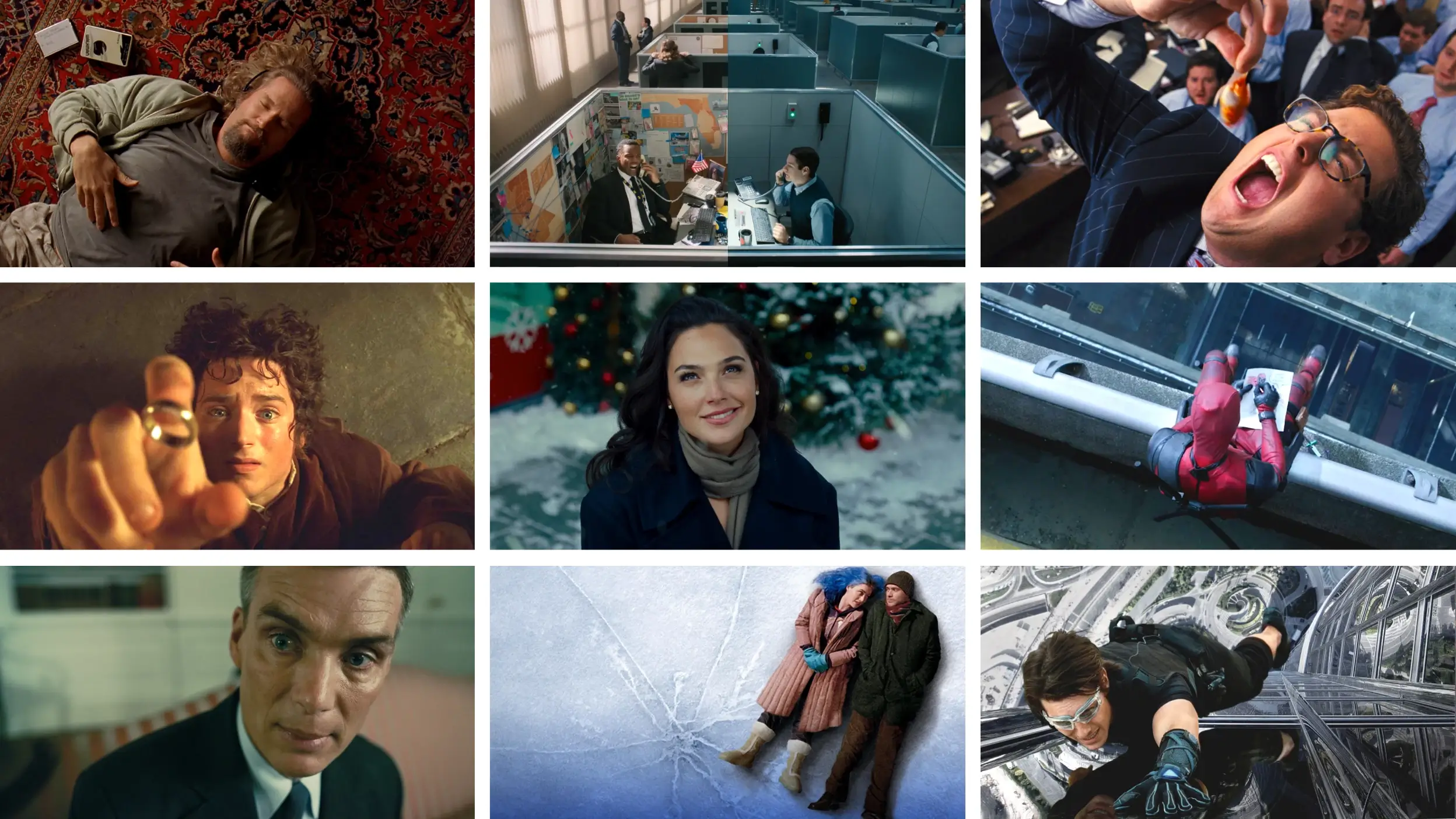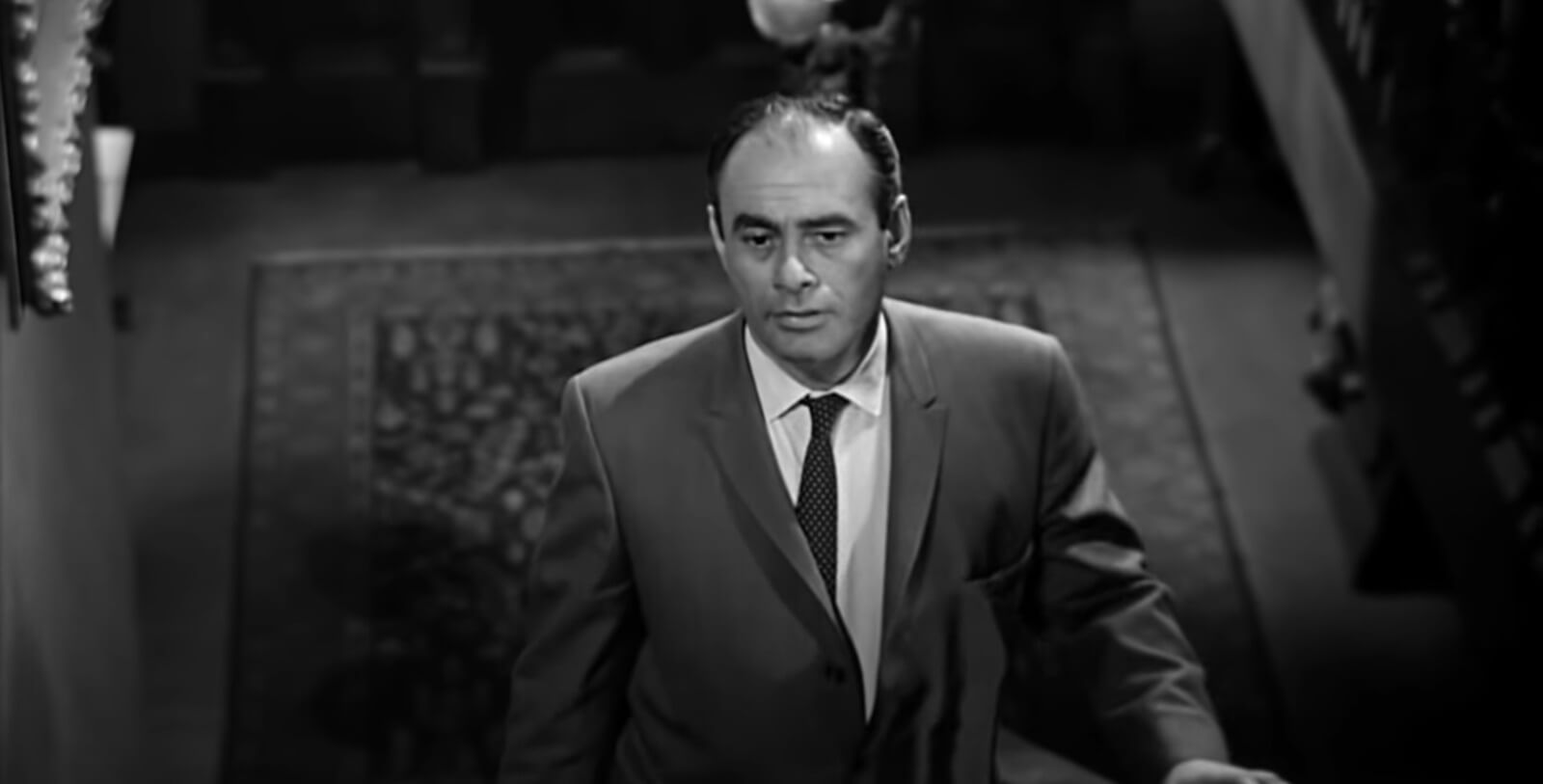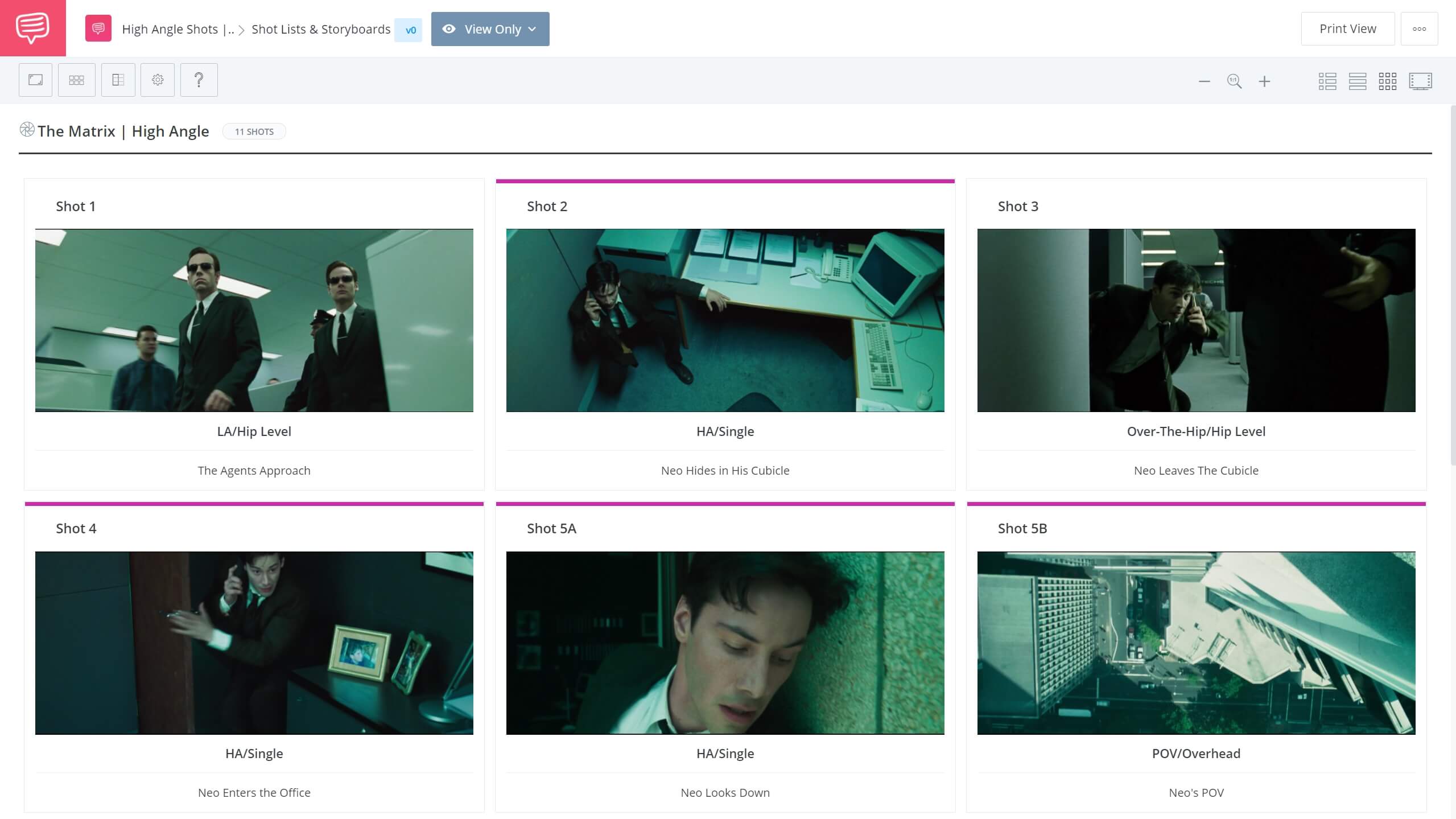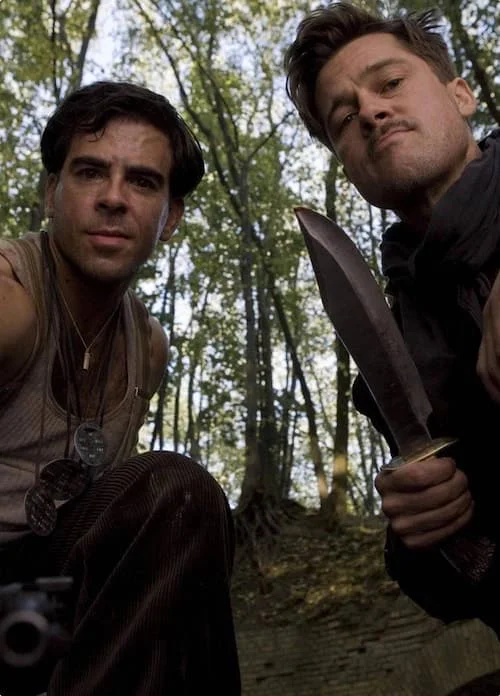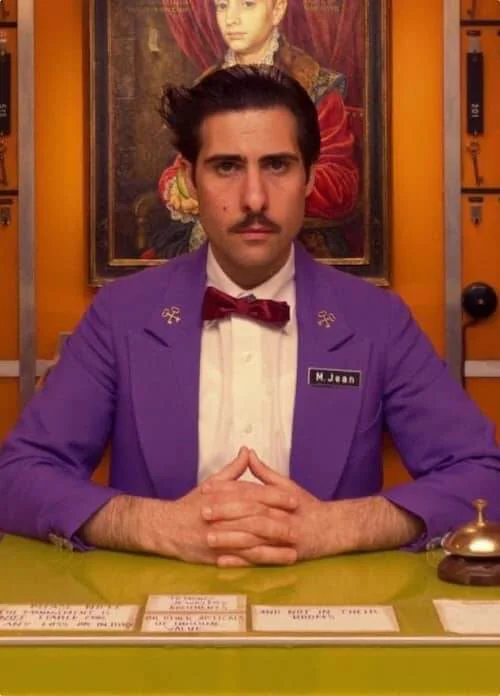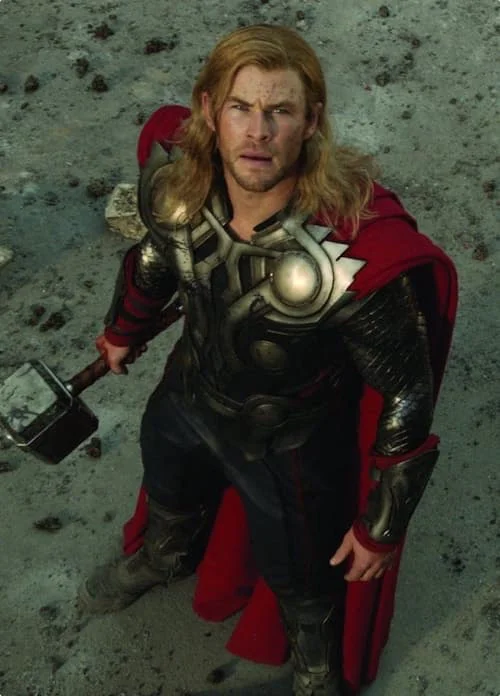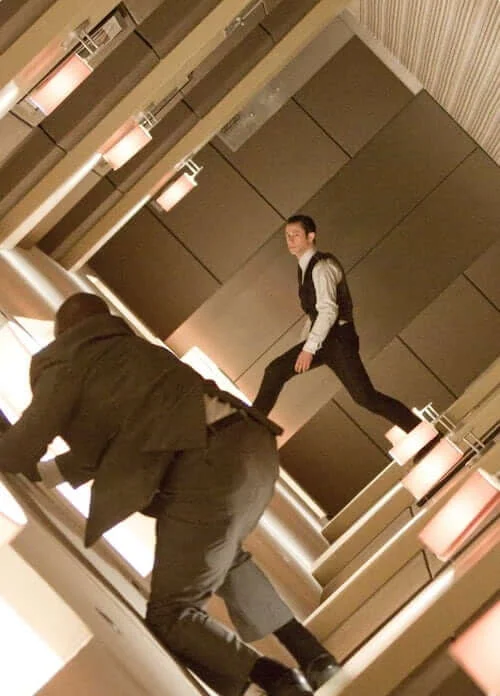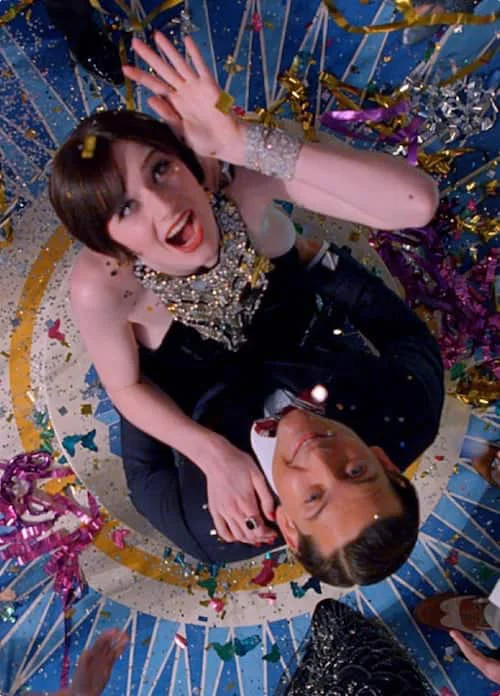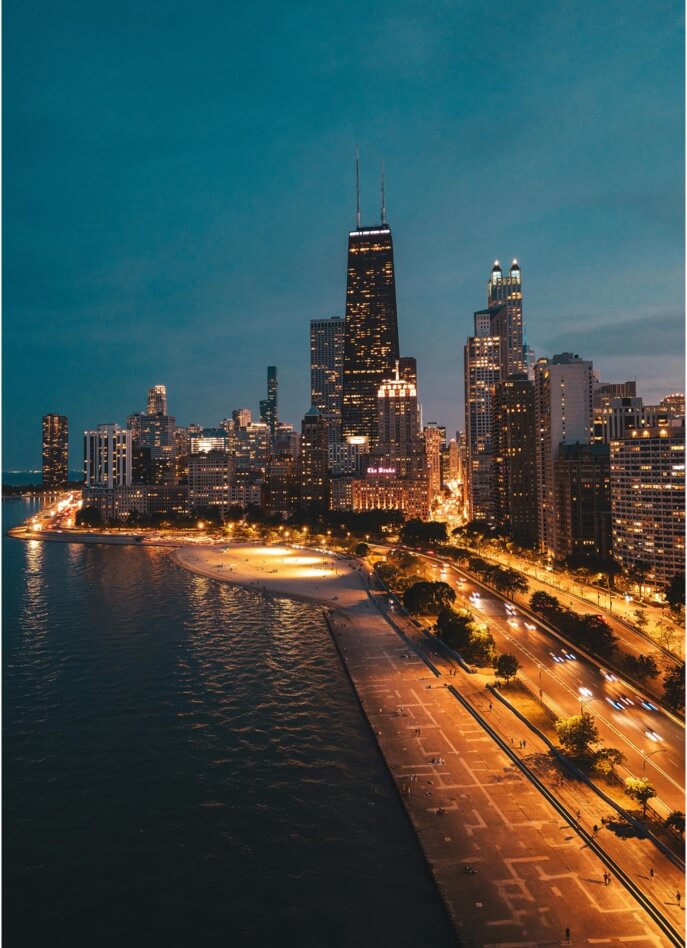The way you frame your actors or subjects conveys a message to the audience. Send the wrong one, and the audience goes packing. But a properly executed high angle shot can produce the exact message you’re after. Today we’re going to go over the high angle shot and how it’ll help you add subtext to your shot selection and variety to your shot list. Along the way, we’ll go over the various applications for this essential camera angle so you’ll know exactly when and how to use it.
Watch: High Angle Shot Definition & Examples
high angle shot definition
What does high angle shot mean?
When creating a shot list, the first question answered is most likely "what" you'll be shooting (the subject). But there are equally important follow-up questions you should be asking yourself. How will I frame my subject? What camera lens should I use? And what should my camera angle be?
Depending on the answers to these questions, you could end up with radically different shots with radically different meanings. A high camera angle is a decision that has a massive impact on your shot's meaning. Depending on the context, a high angle can be used for a variety of reasons. Before we jump into the applications of the high angle camera shot, let's nail down the definition.
High Angle shot definition
What is a high angle shot?
A high angle shot is when the camera looks down on the character or subject from an elevated perspective. This is usually achieved by placing the camera higher than the subject and then angling it down on them. This can range from a shallow angle just above eye level all the way to directly above the subject.
Why use a high angle shot?
- Convey Narrative Information
- Elicit Emotional Response
- Convey Character Information
A high angle shot is just one of the many camera angles possible and can even be combined for additional effect. It all depends on the context of the scene. There is no single answer to "what does high angle shot mean." It means whatever you want it to mean. In the next section, we'll run through the most common applications.
HIGH ANGLE SHOT DEFINITION
Why are high angle shots used?
High angle shots can be used for (at the very least) three ways: to add narrative information, to create a visceral or emotional response, and to present characters from a perspective that makes them seem vulnerable or diminished.
Here's a rundown from our Shot List series of every camera angle, how they work, and whey they might work best in your next shot list.
Ultimate Guide to Camera Angles • Subscribe on YouTube
These applications are not set in stone and there are always exceptions to the rule. That being said, these are some of the most common applications that filmmakers have been using for decades. Let's work through each of these high angle shot examples to help illustrate these points.
High Angle Shot For Plot
1. Narrative high angle
This is when a director uses a high angle shot to show things that would be hard to see from any other angle. It is often used in battle sequences or when showing a large space that has a lot of visual information.
It can establish the scale of a crowd. It can give context to a scene, and is usually shot at a shallow angle.
In Citizen Kane, the high angle shot is used to show the actual scale of the newspaper operation Charles Foster Kane runs. If you look at this scene, Orson Welles uses the high angle to also convey how one person can be dwarfed by the power of the press.
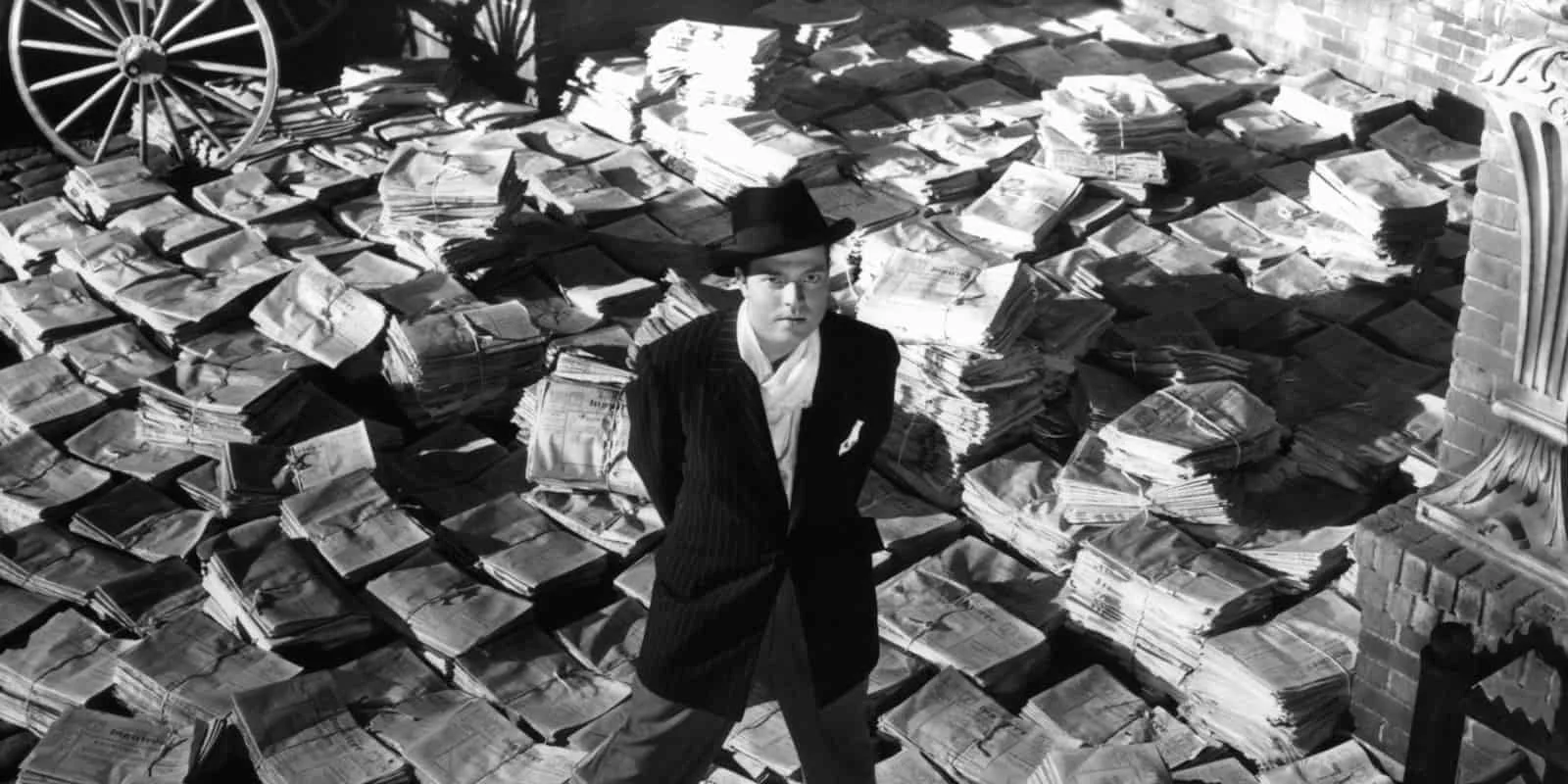
In Mad Max: Fury Road, we wouldn't truly understand the power that Immortan Joe has over the population without a high angle shot like this.
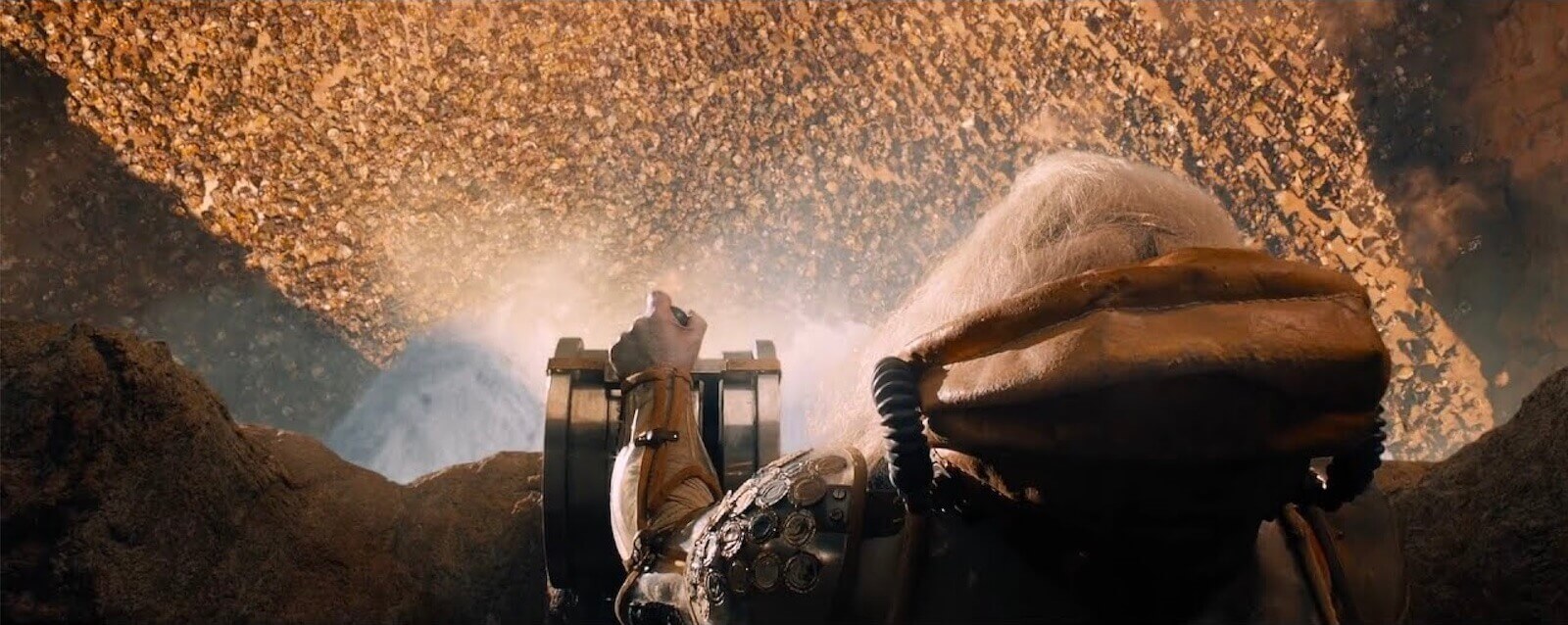
High angle shot example • Immortan Joe's Kingdom
Consider how much information we get from a shot like this. The masses are so far away they become an anonymous collective ruled by a single man. We don't need exposition explaining this — a single high angle shot will do the trick.
High Angle Shot for Emotion
2. Visceral high angle
This is where a director uses a high angle shot to generate a feeling within the mind of the viewer. That feeling is most often ties to human beings natural fear of falling from heights — and thus a high angle shot can simulate that terror. Usually shot at extreme angles, this type of high angle shot establishes tension.
Take this shot from the first act of Titanic. Rose feels like she can’t control her life. She’s got an arranged marriage to a man she doesn’t love.
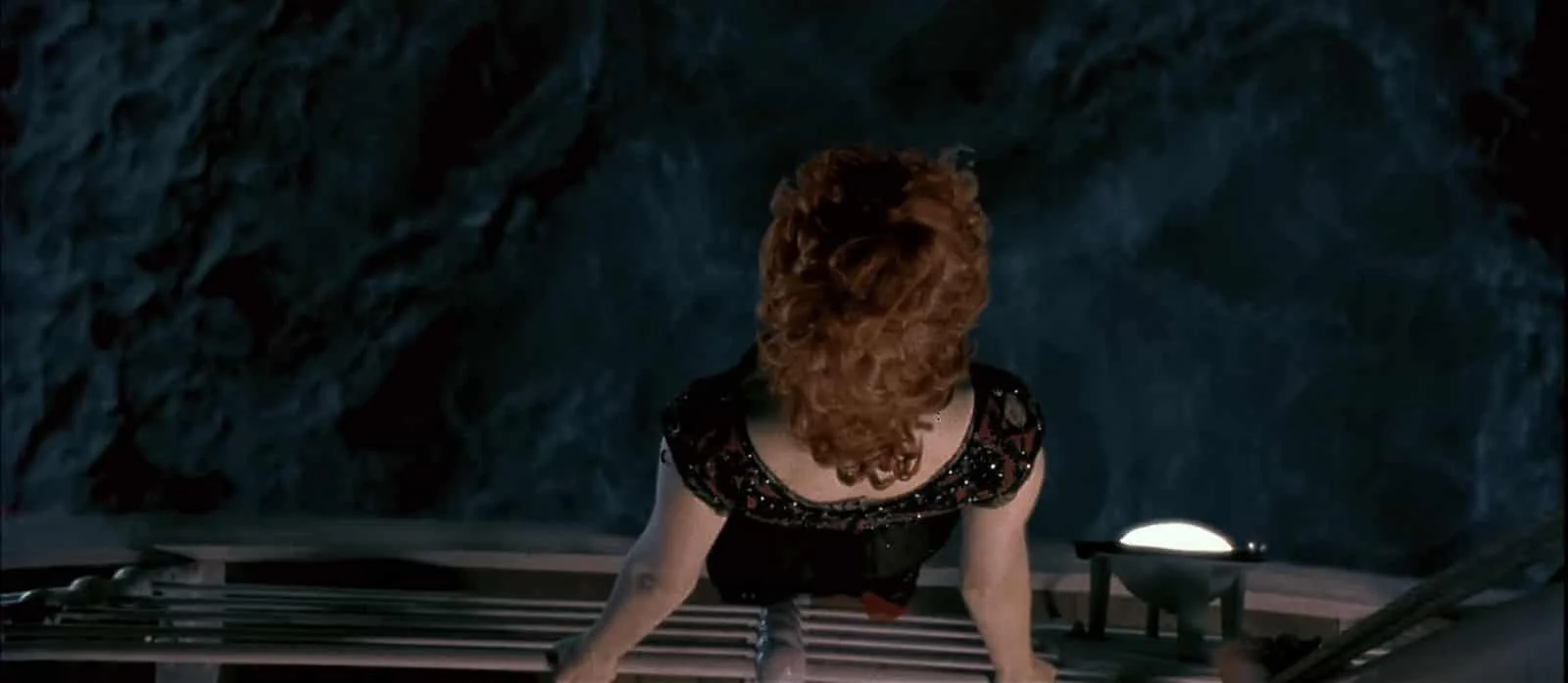
Rose Contemplates Death • High Angle View
James Cameron looks down on her as she looks down on the ocean. She feels insignificant and framed her that way so the audience is on her emotional level. It allows us to share Rose's experience from her perspective. As she contemplates the hopelessness of her situation and the fear of what her actions will mean, so can we.
High Angle Shot for Character
3. Character-driven high angle
High angle shots can signal a character's vulnerability. It is like a psychological vantage point for anyone other than the character in the frame. Most examples do not have a practical reason for using a high angle, but very simply a psychological and film grammar rationale.
Let's start with Dobby in the Harry Potter series. We almost always frame Dobby with a high angle shot. Not only are we trying to show the size of the house elf, but we’re also trying to define how the world looks at and treats him.
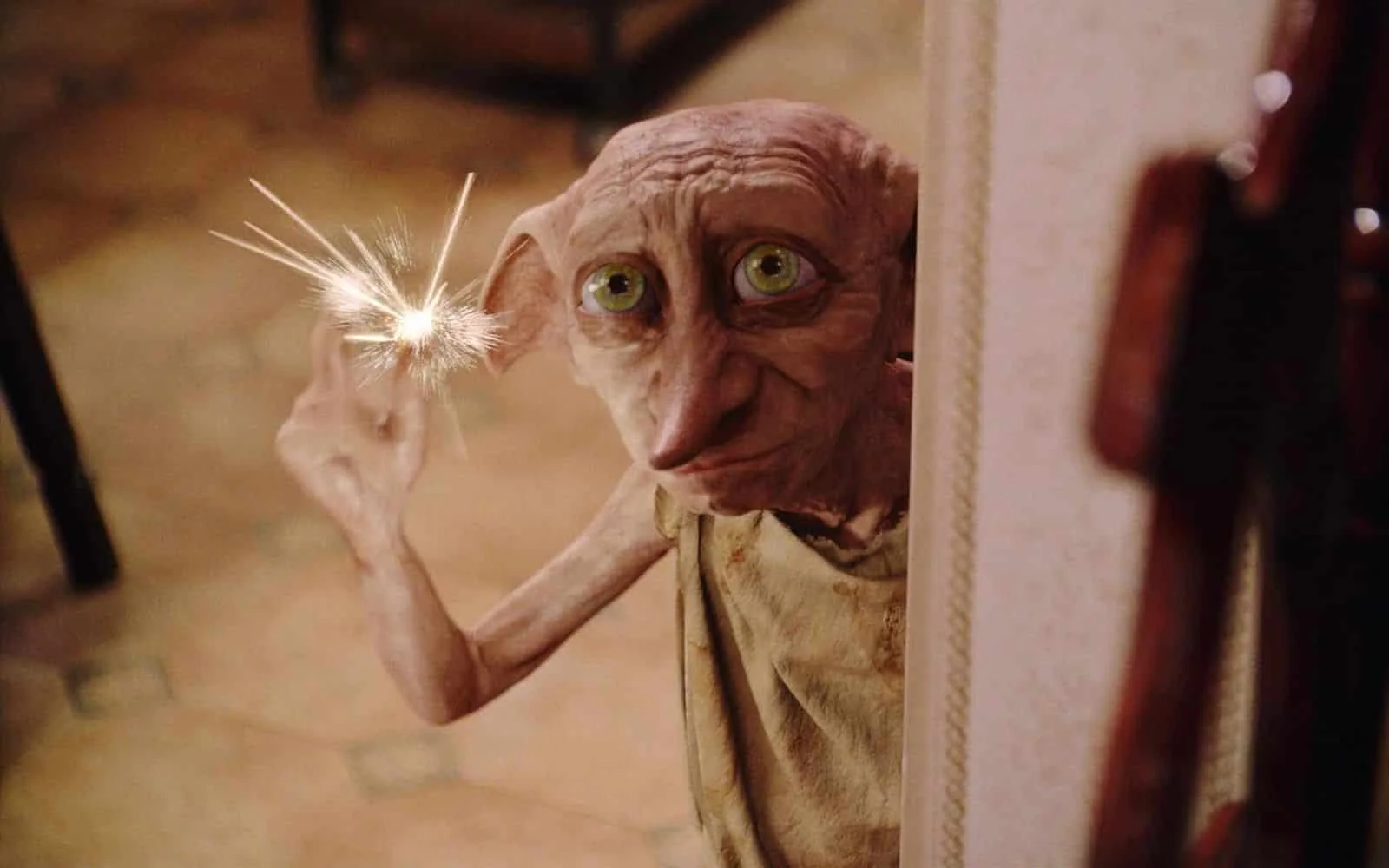
High Angle Shot Example • Looking down on Dobby
High angle shots can also help build tension. In Psycho, Det. Arbogast makes the ill-fated decision to investigate the Bates' residence. As he slowly climbs the stairs, this strategically placed high angle shot puts him at a disadvantage. And in just a few seconds, we'll know why.
Det. Arbogast is in danger
The Princess Bride builds an entire set piece around Westley looking weak as he climbs the wall to rescue Princess Buttercup. Looking down on him is Iñigo Montoya, his soon-to-be combatant.
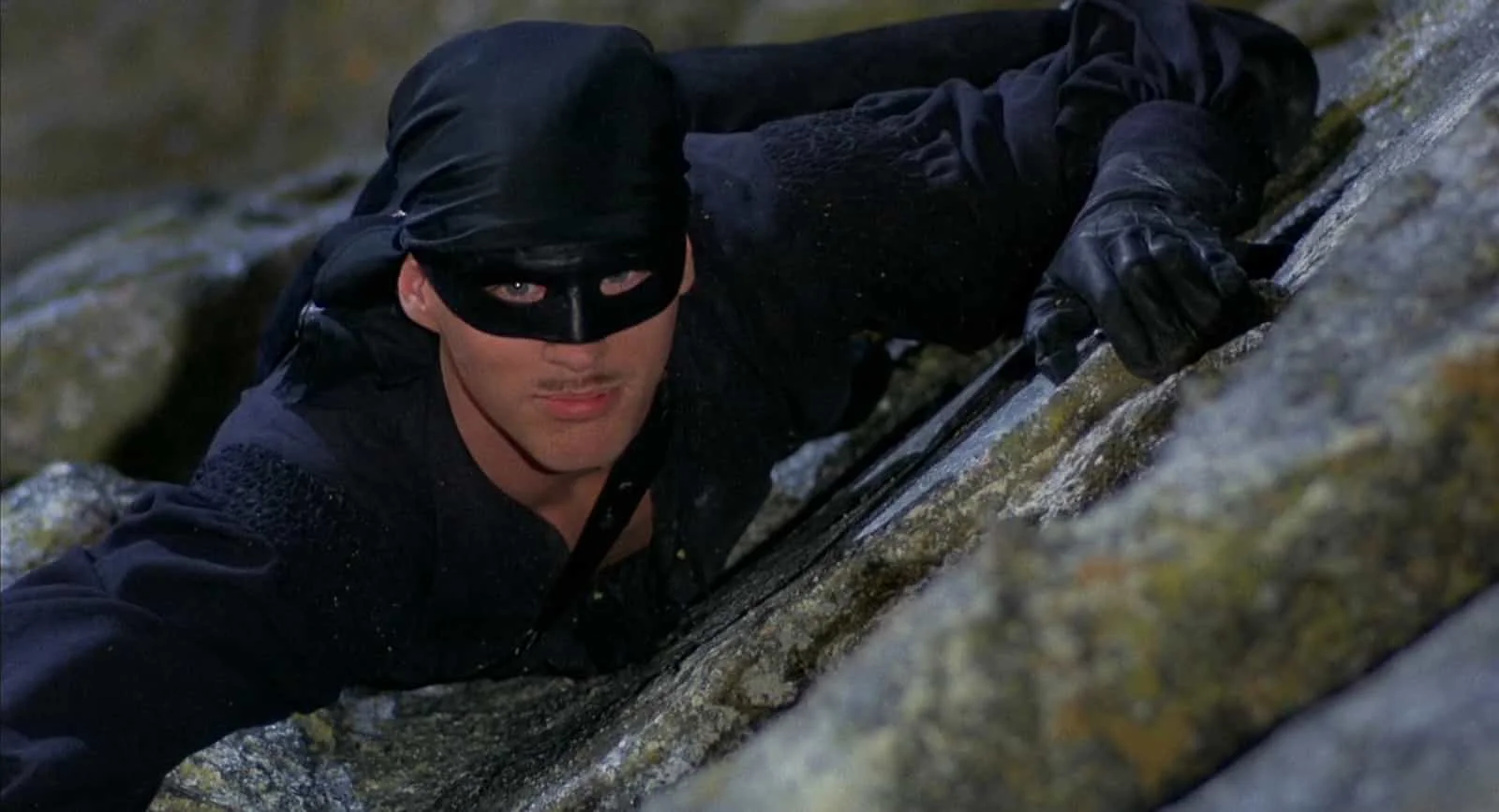
High Angle Example • Westley wants you to underestimate him
During their subsequent sword fight, Westley will reveal that he's been downplaying his abilities, causing Iñigo to underestimate him. It's a clever tactic that starts with shots like this.
subtle use of the high angle
High angle shots that break the rules
High angle shots don't always have to play by the rules. Filmmakers often subvert our expectations to express more nuanced emotions.
Remember our example above from Psycho? Hitchcock used the high camera angle to make Arbogast vulnerable and powerless. But in The Shining, one of Stanley Kubrick's best movies, this idea is reversed.
Here's the scene (fast forward to 3:00 when they start climbing the stairs) and pay attention to the interplay between high angle shots and low angle shots.
Power from a high angle shot is subverted in The Shining
In this scene, Jack is the aggressor and holds all the power while Wendy is vulnerable. And yet the camera angles used don't align with our expectations. This kind of juxtaposition is what Kubrick is known for.
What about using the high angle shot for a higher power?
No matter what you believe in, filmmakers believe in the high angle shot. This scene from The Shawshank Redemption is something we’ve built toward the entire movie. We’ve seen Andy bullied by inmates, guards, and the warden.
The high angle has given everyone power but Andy. As soon as he steps out into the rain, Andy shows how grateful he is to finally be free.
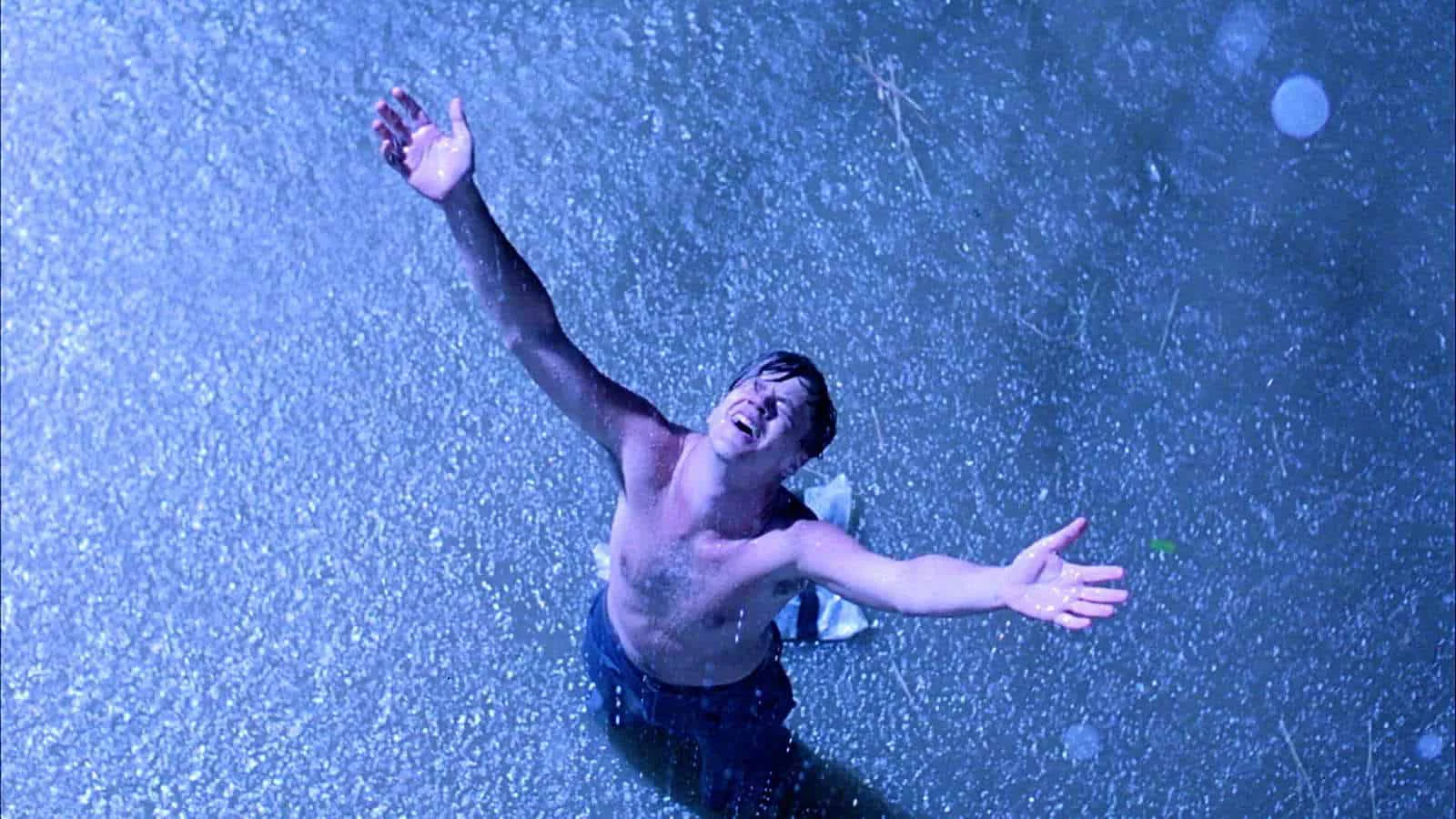
The entirety of Shawshank builds to this shot. We hit Andy with the high angle. Instead of the feeling of being powerless, we see Andy feel the relief of his problems washing off him.
HOW TO SHOT LIST
How to shot list your high angle shots
So, you’ve written the script, and you have the perfect scene to utilize high angle shot. What do you do now? You need to put it on a shot list so your DP can anticipate and prep. A high angle shot takes a lot of planning.
Do you want to use a crane shot to get the angle, or are sticks fine? What about using one of today's best drones?
How much should be in focus? What’s the ideal depth of field for the shot?
You want to capture all these crucial details in your shot list. You can also add notes to drive home the type of high angle you want to use.
Narrative? Visceral? Character? All three?
As you assemble your shot list, remember that a high angle shot can sometimes be the perfect shot for that moment. Here's a collection we put together in StudioBinder's shot list software. Click the image to explore the entire storyboard — you can even download a PDF for future reference.
High Angle Shots in Movies • View the Shot List
For a specific example, let's look at this is the scene in The Matrix when the Agents arrive at Neo's office job, searching for him. He manages to evade them through a window onto the ledge. Open the storyboard link to explore the entire scene.
What Does High Angle Shot Mean in The Matrix • View the Shot List
In this scene, the high angle shot is used for a couple different purposes. We get to see the fear and vulnerability in Shot 2 with Neo cowering in his cubicle. When paired with the low angle of the Agents in Shot 1, we get a classic example of how power dynamics are conveyed through camera angles.
And we also get the visceral/emotional reaction when Neo is out on the ledge looking down. These shots are designed to help us empathize with Neo, to share his panic.
Wrapping Up
Final thoughts on high angle shots
A high camera angle shot works across all movie genres. A high angle in comedy will have a different effect and meaning than a high angle in horror. It's all about context.
Lighting cues and camera placement really affect the mood you get, so make sure your work reflects the specific tone you're aiming for. Remember to combine a high angle with different compositions, shot sizes, or camera movements to create even more nuanced and dynamics visuals.
Ready to explore more camera angles? Follow the links below.
CAMERA ANGLES
Get Inspired. Explore More Angles.
Explore the different types of camera angles, and learn how to combine them with other shot specs for visual storytelling.
Different Types of Camera Angles
Share your vision with elegant shot lists and storyboards.
Create robust and customizable shot lists. Upload images to make storyboards and slideshows.
